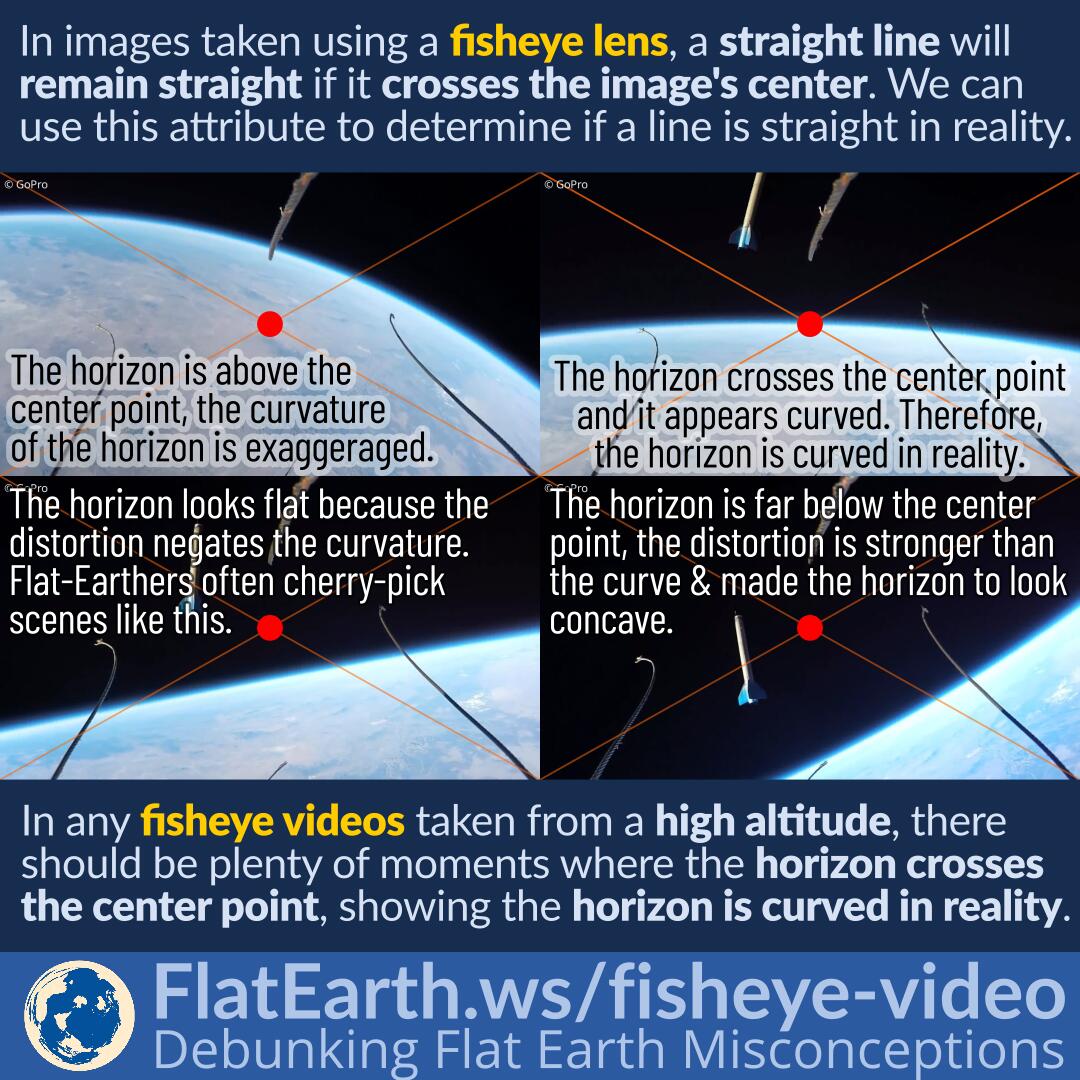In images taken using a fisheye lens, a straight line will remain straight if it crosses the center of the image. We can use this attribute to determine if a line is straight in reality.
In any fisheye videos taken from a high altitude, there should be plenty of moments where the horizon crosses the center of the image, and we can use those to determine that the horizon line is curved in the real world.
If the horizon is above the center point, the fisheye distortion will exaggerate the curvature. The horizon will look curved more than in reality. On the other hand, if the horizon is below the center point, the fisheye distortion will bend lines in the other direction, and at some point, Earth’s curvature will appear concave as a result.
Only when the line crosses the center point of the image, we can determine if a line is straight in the real world. A straight line crossing the center of the image will appear straight, and if a line crossing the center of the image appears curved, then it must be curved in reality. It is how we can determine the horizon is curved even if the video was taken using a fisheye lens.
Flat-Earthers often focus themselves on the edges of the frame where fisheye distortion will exaggerate the curvature or turn the curve to look concave and then dismiss the video entirely. Others will cherry-pick moments where the distortion will turn the curve to appear flat and present them as “proof” of a supposed flat Earth. By understanding the characteristics of the distortion, we can use the fisheye videos to prove Earth’s curvature and avoid their deception.
References
- Fisheye lens – Wikipedia


